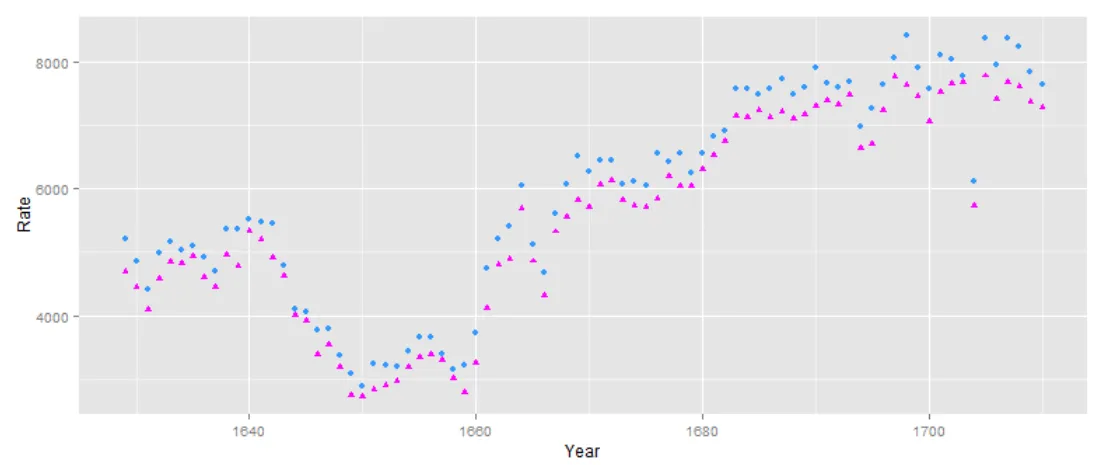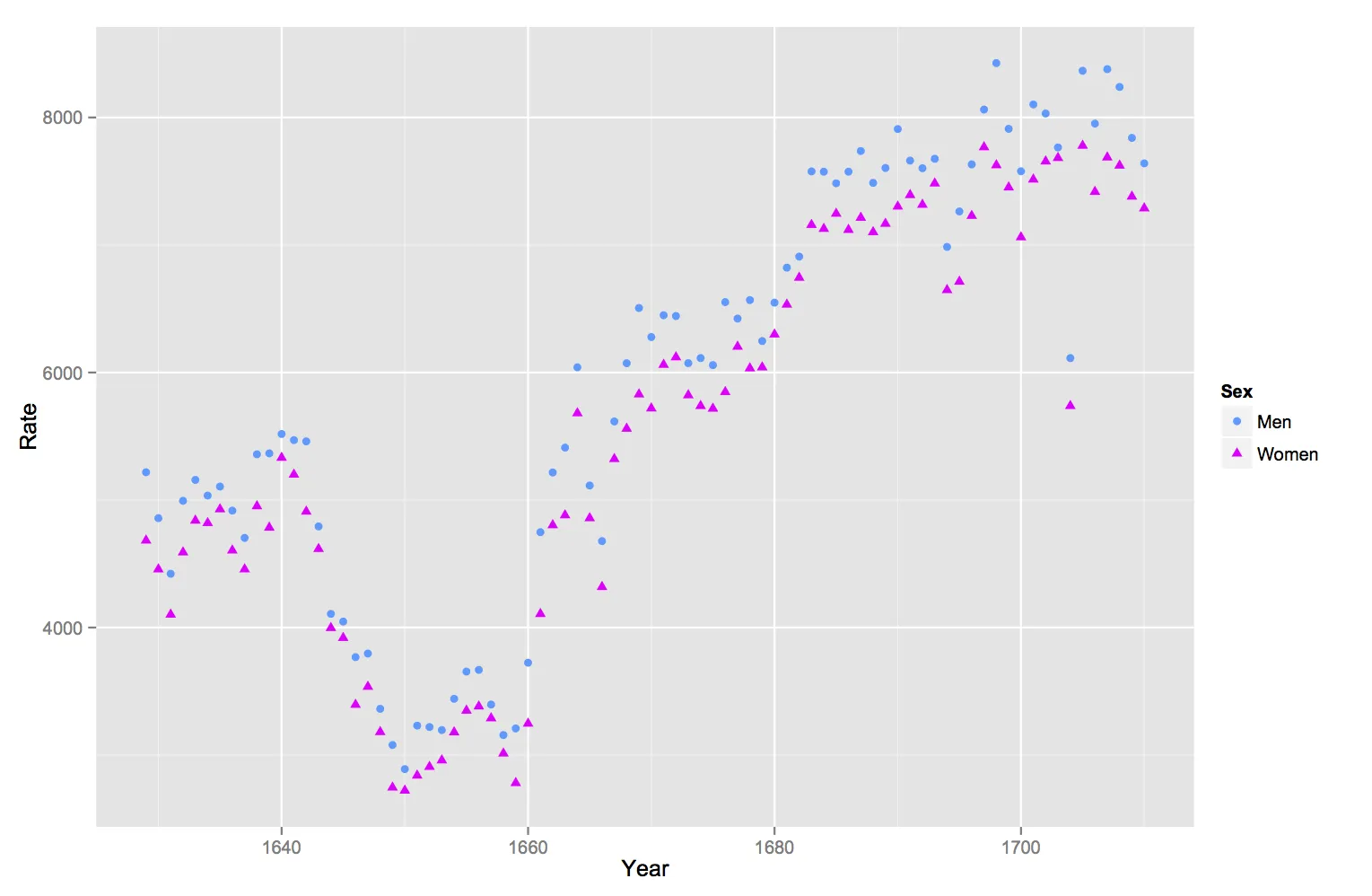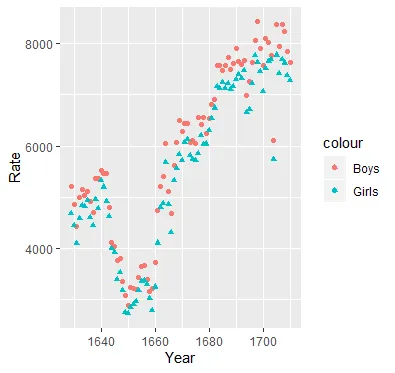以下是一种不使用reshape::melt的方法来实现此目的。尽管reshape::melt可以工作,但如果您想向图表中添加其他内容(例如线段),则可能会陷入困境。下面的代码使用数据的原始组织方式。修改图例的关键是确保scale_color_manual(...)和scale_shape_manual(...)的参数相同,否则将得到两个图例。
source("http://www.openintro.org/stat/data/arbuthnot.R")
library(ggplot2)
library(reshape2)
ptheme <- theme (
axis.text = element_text(size = 9),
axis.title = element_text(size = 9),
axis.ticks = element_line(colour = "grey70", size = 0.25),
panel.background = element_rect(fill = "white", colour = NA),
panel.border = element_rect(fill = NA, colour = "grey70", size = 0.25),
panel.grid.major = element_line(colour = "grey85", size = 0.25),
panel.grid.minor = element_line(colour = "grey93", size = 0.125),
panel.margin = unit(0 , "lines"),
legend.justification = c(1, 0),
legend.position = c(1, 0.1),
legend.text = element_text(size = 8),
plot.margin = unit(c(0.1, 0.1, 0.1, 0.01), "npc")
)
cols <- c( "c1" = "#ff00ff", "c2" = "#3399ff" )
shapes <- c("s1" = 16, "s2" = 17)
p1 <- ggplot(data = arbuthnot, aes(x = year))
p1 <- p1 + geom_point(aes( y = boys, color = "c1", shape = "s1"))
p1 <- p1 + geom_point(aes( y = girls, color = "c2", shape = "s2"))
p1 <- p1 + labs( x = "Year", y = "Rate" )
p1 <- p1 + scale_color_manual(name = "Sex",
breaks = c("c1", "c2"),
values = cols,
labels = c("boys", "girls"))
p1 <- p1 + scale_shape_manual(name = "Sex",
breaks = c("s1", "s2"),
values = shapes,
labels = c("boys", "girls"))
p1 <- p1 + ptheme
print(p1)
output results


